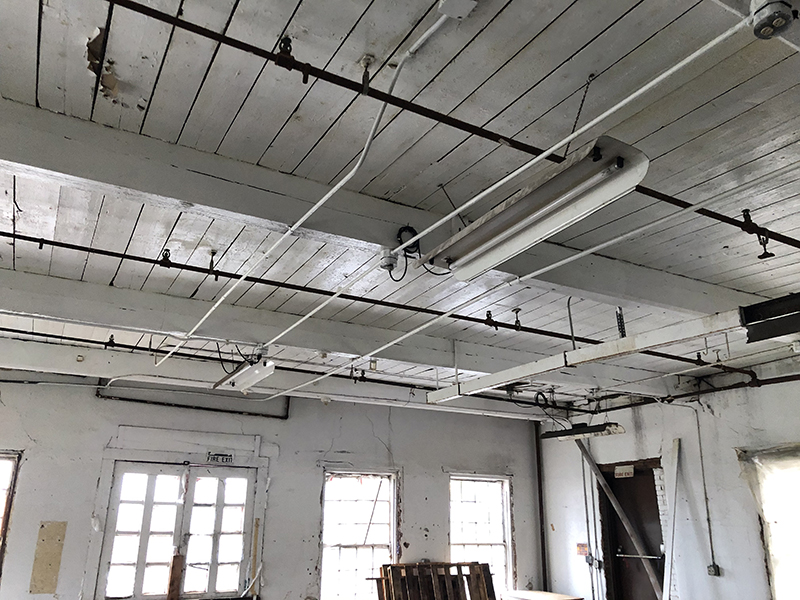
The greater availability recently of brownfields and other grants has made the redevelopment of former mills and historical buildings more financially attractive. However, the presence of polychlorinated biphenyls (PCBs) in building materials, especially paints, can lead to significant future liability. Removal of materials classified as PCB bulk product wastes is required under federal PCB regulations, but PCBs often remain in the building substrates to which they were applied, like walls and window casings. Even when encapsulated, PCBs will leach to the surface and volatilize into indoor air. This potential volatilization and the potential health hazard can limit or complicate potential future uses, especially residential.
Added to prolong the useful life of building materials, PCBs were used in varying concentrations in building materials like caulks and paints between about 1950 and 1980. The concentrations of PCBs in building materials varied widely but some materials have been tested as containing percentage-level concentrations. PCBs in high concentrations found in paints and caulks will diffuse over time into the building substrates like the brick, concrete, and wood to which they were applied. Given the length of time of contact, greater than 50 years in many cases, PCBs can diffuse several inches into the once clean building substrates.

walls of a former mill building.
Typical abatement procedures for PCB-containing building materials include removal of all visible PCB-containing building materials, such as paints. This is a surficial removal action that removes the highest concentration of PCBs. However, testing the surface of the building substrate following removal will still typically find PCBs in regulated concentrations. Remaining PCB concentrations in the building substrates typically depend upon the concentration of PCBs in the original building material applied but are typically greater than one milligram per kilogram (mg/kg). These remaining building substrates are then classified as PCB remediation waste. To prevent direct exposure to the PCB-containing building substrates, a physical barrier is placed over the substrate or an encapsulant is applied directly onto the surface. The use of epoxy coatings as an encapsulant is typical since they have the longest useful lifetime and are easiest to apply.
For caulk joints like window or expansion joints, remedial actions typically involve removal of the caulk and potentially some building substrates in contact with the caulk. A small area of PCB-impacted materials may remain in place if they are encapsulated or a barrier is installed, and approvals are required from the US EPA and potentially your state environmental regulatory agency.
However, as shown in the photo, when PCB-containing paints are identified, there are often large areas impacted and it is not always possible to remove all the PCB-impacted building substrates for structural reasons. As a result, there can be large areas of PCB-impacted building materials left in place with encapsulants or barriers covering the surface. Removal of the PCB bulk product waste paints will remove the largest source of PCBs within the building but, with time, PCBs will diffuse into the encapsulants and then can volatilize into indoor air. The larger the surface area impacted by PCBs, the greater the potential for PCBs to volatilize into indoor air.
This route of potential PCB exposure is of great concern to the EPA, so the agency has begun to require air testing to determine that the future use of the building does not pose an excess risk to future occupants. For industrial or commercial uses, the standard for occupancy is total PCB concentrations less than 20 nanograms per cubic meter (ng/m3). For residential uses, that standard is only five ng/m3, and EPA will likely require retesting of indoor air on a periodic basis if PCB-impacted materials remain in the building. The costs for future testing and any corrective measures, if required, are typically borne by the building owner or manager.
If you are restoring a historical building for residential purposes, it is important to determine what PCB-containing building materials may be present and to include abatement and restoration costs in the development plans. It is also important that you include potential future air testing and additional site remediation in future costs. To limit this future liability, it would be very helpful if encapsulating materials were developed that hindered the diffusion of PCBs and prevented them from reaching the surface and volatilizing into indoor air. However, such a material is not available at this time, and developers of historical buildings should be aware of the potential future liabilities posed by PCBs in building materials.
Malcolm Beeler, LEP, is a senior technical leader with Weston & Sampson, Rocky Hill, Conn.
 (1).png)







